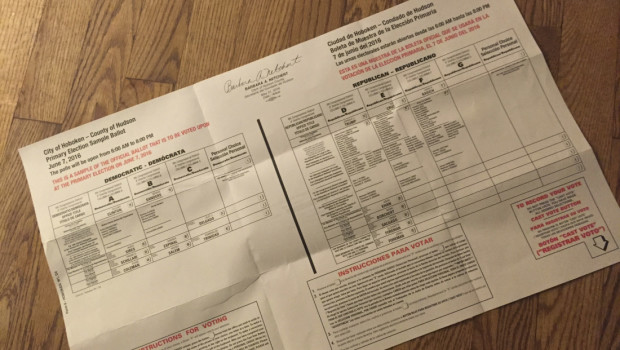
DOC TALK—Ask the PT: How to Avoid Common Injuries
Spring is finally here, and it’s time to shed that winter weight and get active once again. However, it’s important to be know your limits and take precautions as your body emerges from hibernation. You don’t want to pull a hammy getting off the couch…
Once of the biggest obstacles to fitness is injury—particularly recurring or chronic injury, which makes getting into shape simply too painful for many. Don’t take yourself out of the game before you’ve even started.
Dr. Orlando is an orthopedic, sports medicine, and pediatric trained therapist and certified personal trainer. He has over 14 years of clinical experience—including treatment of amateur and professional athletes, CEO’s, and TV/Radio personalities. His practice, Orlando Physical Therapy, is located at 1321 Washington Street—right here in Hoboken.
Dr. Orlando took some time to talk to us here at hMAG and explain the essentials of injury avoidance and conditioning for particular activities…
Q: What is the best way you can avoid common injuries if you have an active lifestyle? Or if prone to a particular injury?
Certain injuries happen because one might be predisposed to an injury based on their genetic makeup. However, there are studies that estimate that 50% of all fitness injuries for people with active lifestyles were preventable had the individual taken appropriate precaution before, during, or after the fitness event. This is good news because it gives you a certain amount of control over your health and lessens the anxieties that go along with the fear of being injured.
First and foremost, active people need to condition themselves properly. Don’t try to “play” your way into shape. Make sure you train and condition the specific muscles that you are using. For example, if you are involved in an overhead activity, then I would focus on rotator cuff strengthening and shoulder flexibility. If you are a runner, I would focus on quadricep, hamstring, and patellofemoral conditioning. If you play basketball, you might want to take more time working on your calf muscles and ankle stability.
Secondly, warm up. Don’t be in such a rush to get out there and start sprinting or lifting heavy objects. Make sure you stretch, and that your stretches are sport/activity specific. Gradually increase blood flow into your muscles, tendons, and ligaments. Warm muscles are less susceptible to injuries.
Lastly, avoid participating in an activity if you are in pain or tired. That’s usually a signal for a problem or a potential underlying injury.
If you are prone to a particular injury then I would recommend having a Functional Movement Screen (FMS). This is a relatively quick screen that systematically identifies certain functional limitations and asymmetries. Once you understand the faulty movement pattern that is causing the injury, you can then use corrective exercises to help restore proper mechanical movement and limit the possibility of injury recurrence.
Have a fitness or wellness question you’d like answered? Email askdrorlando@gmail.com.
Website: www.orlandopt.com
Facebook: facebook.com/orlandophysicaltherapy
Twitter: @OrlandoPTNJ


 Previous Article
Previous Article Next Article
Next Article FUNDRAISER FOR VICTIMS OF WASHINGTON STREET FIRE — Friday, Feb. 19 at Kolo Klub
FUNDRAISER FOR VICTIMS OF WASHINGTON STREET FIRE — Friday, Feb. 19 at Kolo Klub  HOBOKEN ARTS & MUSIC FESTIVAL: Remember Jones, Swingadelic, The Schramms & More — SUNDAY, SEPTEMBER 29
HOBOKEN ARTS & MUSIC FESTIVAL: Remember Jones, Swingadelic, The Schramms & More — SUNDAY, SEPTEMBER 29  VOTE.
VOTE.  FAIRYTALE OF HOBOKEN: SantaCon Fills the Drunk Tank with 8 Arrests, 20 Hospitalized and Over 500 Calls to the Police
FAIRYTALE OF HOBOKEN: SantaCon Fills the Drunk Tank with 8 Arrests, 20 Hospitalized and Over 500 Calls to the Police  Body Found Under 14th Street Viaduct
Body Found Under 14th Street Viaduct  ALEO at W Hoboken Puts Local Musicians in the Limelight
ALEO at W Hoboken Puts Local Musicians in the Limelight  Wild Car Crash in Hoboken as Driver Careens Through Streets, Sidewalks
Wild Car Crash in Hoboken as Driver Careens Through Streets, Sidewalks  ROCK ON THE ROCKS: The Latest Noise Presents Freddie Bourne, Brendan Hartnett, Julia Kirk & Kuz at Hoboken’s SW Park – TUESDAY, JUNE 19th from 6-8
ROCK ON THE ROCKS: The Latest Noise Presents Freddie Bourne, Brendan Hartnett, Julia Kirk & Kuz at Hoboken’s SW Park – TUESDAY, JUNE 19th from 6-8